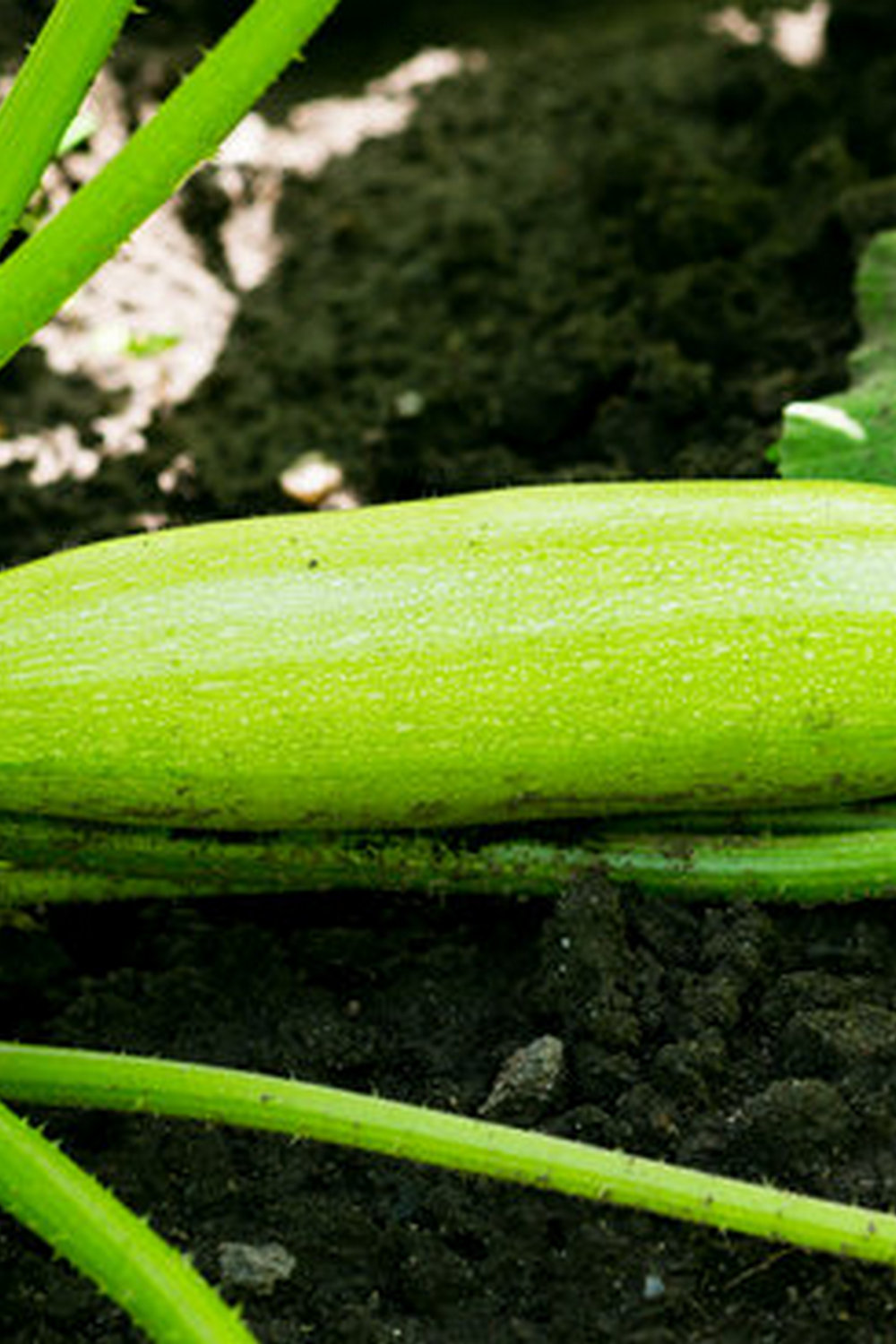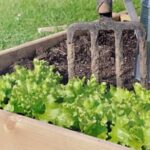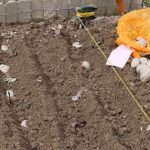Square foot gardening vegetables have become increasingly popular among home gardeners looking to optimize space and yield. This gardening method, developed by Mel Bartholomew in the 1980s, involves creating small, organized growing spaces to maximize efficiency and productivity. In this article, we will explore the concept of square foot gardening and its numerous benefits for both novice and experienced gardeners alike.
One of the primary advantages of square foot gardening is its ability to make efficient use of limited space. By dividing your garden into equal square foot sections, you can grow a variety of vegetables in a compact area.
This method not only saves space but also makes it easier to maintain and harvest your crops. Additionally, square foot gardening is known for promoting high yields with minimal effort, making it an attractive option for those with busy schedules or limited time for traditional gardening practices.
In the following sections, we will delve into the step-by-step process of setting up a square foot garden, choosing the right vegetables for optimal growth, maintaining your garden through proper watering and pest control techniques, harvesting your produce at the peak of freshness, troubleshooting common issues that may arise, and hearing success stories from seasoned gardeners who have embraced square foot gardening.
Whether you are a beginner looking to start your first vegetable garden or a seasoned gardener seeking to refine your skills, square foot gardening offers a practical and rewarding approach to growing your own fresh produce right at home.
How to Set Up a Square Foot Garden
Square foot gardening is a popular method for growing an abundance of vegetables in a limited space. It’s a great way to maximize yield and make the most out of your garden area. Setting up a square foot garden involves creating a layout that divides the growing space into individual square feet for planting different crops. Here’s a step-by-step guide on how to set up your own square foot garden:
- Choose the location: Select a sunny spot in your yard or balcony where your square foot garden will receive at least 6-8 hours of sunlight each day.
- Prepare the soil: Mix equal parts of peat moss, vermiculite, and compost to create a lightweight and nutrient-rich growing medium for your square foot garden.
- Build the frame: Construct a raised bed frame with untreated lumber or cedar boards to contain the soil mixture. Divide the frame into equal sections to create individual square feet.
- Add grids: Using string or wooden slats, create a grid on top of the soil to divide each square foot into smaller sections for planting different vegetables.
- Planting: Follow the recommended spacing for each vegetable based on their size and growth habits. Plant seeds or seedlings according to the guidelines provided on their packets.
By following these steps, you can set up your own square foot garden and start growing a variety of vegetables efficiently in a small space. Whether you’re a beginner gardener or have limited gardening experience, square foot gardening is a practical and productive way to enjoy fresh produce right from your backyard.
Choosing the Right Vegetables for Square Foot Gardening
When it comes to choosing the right vegetables for square foot gardening, there are several factors to consider. First and foremost, you want to select vegetables that are well-suited for small spaces and can thrive in the close quarters of a square foot garden.
Some of the best options for maximum yield in square foot gardening include leafy greens like lettuce, spinach, and kale, as they tend to grow well in compact spaces and can be harvested multiple times throughout the growing season.
Another excellent choice for square foot gardening vegetables is root crops such as carrots, radishes, and beets. These vegetables grow downwards rather than outwards, making them ideal for the limited space of a square foot garden. Additionally, herbs like basil, parsley, and chives are perfect for adding flavor to your dishes while also serving as beautiful additions to your garden layout.
For those looking to add some variety to their square foot garden, consider planting compact varieties of tomatoes, peppers, and cucumbers. These veggies can be trained to grow vertically with support structures like trellises or cages, maximizing your growing space and ensuring a bountiful harvest.
By carefully selecting a diverse array of vegetables that complement each other’s growth patterns and nutritional needs, you can create a thriving square foot garden that produces an abundance of fresh produce throughout the season.
| Vegetable Option | Benefits |
|---|---|
| Leafy Greens (Lettuce, Spinach, Kale) | Multiple harvests in limited space |
| Root Crops (Carrots, Radishes, Beets) | Grows downwards; perfect for small spaces |
| Herbs (Basil, Parsley, Chives) | Adds flavor and beauty; easy to maintain |
Square Foot Gardening Vegetables
Square foot gardening is a popular method that allows individuals to maximize their garden space and grow a variety of vegetables in a confined area. It involves dividing the garden bed into small squares, typically 1-foot by 1-foot, to efficiently utilize space and resources. One of the main benefits of square foot gardening is its ability to produce high yields in a limited area, making it perfect for beginners who may have limited space or experience.
When selecting vegetables for square foot gardening, it is important to choose crops that are well-suited for this intensive planting method. Some of the top recommended veggies for beginners to grow in a square foot garden include leafy greens like lettuce, spinach, and kale. These plants can be closely packed together and harvested multiple times throughout the season, providing a continuous supply of fresh produce.
Additionally, root vegetables such as carrots, radishes, and beets are excellent choices for square foot gardening. These crops do well in the compact spaces of a raised bed and can be harvested when they reach the desired size. By choosing the right vegetables for your square foot garden, you can enjoy a bountiful harvest of fresh, homegrown produce throughout the growing season.
| Vegetable | Recommended for Square Foot Gardening |
|---|---|
| Lettuce | Yes |
| Carrots | Yes |
| Spinach | Yes |
Maintaining a Square Foot Garden
When it comes to maintaining a square foot garden, there are several key factors to consider in order to ensure the success of your vegetable crops. Proper watering, weeding, and pest control are essential tasks that should be incorporated into your gardening routine. By following these tips, you can help your square foot garden thrive and produce an abundant harvest of vegetables.
Here are some valuable tips for maintaining your square foot garden:
- Watering: One of the most important aspects of caring for your square foot garden is ensuring that your plants receive adequate water. Overwatering can lead to root rot, while underwatering can cause stunted growth. To determine the correct amount of water needed for your garden, check the soil moisture regularly by sticking your finger into the soil. Water deeply when the top inch of soil feels dry.
- Weeding: Regular weeding is crucial to prevent unwanted plants from competing with your vegetables for nutrients and moisture. By staying on top of weed control, you can help your veggies thrive without being overshadowed by invasive plants. Consider using mulch to suppress weed growth and keep your garden beds tidy.
- Pest Control: Protecting your square foot garden from pests is essential to ensuring a bountiful harvest. Keep an eye out for common garden pests such as aphids, slugs, and caterpillars, and take prompt action to eliminate them before they cause significant damage to your crops. Consider using natural remedies or organic pesticides to maintain a healthy balance in your garden ecosystem.
By incorporating these tips into your maintenance routine, you can enjoy a successful square foot gardening experience and reap the rewards of fresh, homegrown vegetables throughout the growing season. Remember that consistent care and attention to detail are key factors in achieving a thriving garden full of flavorful produce.
Harvesting Your Square Foot Garden
One important thing to keep in mind when harvesting vegetables from your square foot garden is the maturity of the plant. Different vegetables have varying maturity times, so it’s essential to know when each type of veggie is ready to be harvested. For example, leafy greens like spinach and lettuce can be picked as soon as they reach a desirable size, while root vegetables such as carrots and radishes should be harvested once they have reached full size.
Another factor to consider when harvesting your square foot gardening vegetables is the time of day. Most experts recommend harvesting in the early morning or late afternoon when temperatures are cooler. This helps preserve the flavors and nutrients of the veggies, making them taste even better when you finally get them on your plate. Additionally, using sharp scissors or pruners to harvest your veggies can help prevent damage to the plants and ensure a clean cut for optimal regrowth.
Overall, harvesting from your square foot garden can be a truly satisfying experience. Not only do you get to enjoy the freshest produce possible right from your backyard, but you also gain a deeper appreciation for the time and effort that goes into growing your own food. So roll up your sleeves, grab a basket, and get ready to enjoy the bountiful harvest from your square foot garden.
Troubleshooting Common Issues in Square Foot Gardening
Identifying Common Plant Diseases in Square Foot Gardening
One of the challenges that square foot gardeners may face is dealing with plant diseases. It is important to be able to identify common diseases such as powdery mildew, blight, and wilt early on to prevent further spread. Powdery mildew appears as a white powdery substance on leaves, while blight causes dark spots on foliage.
Wilt can cause plants to droop and eventually die if left untreated. By regularly inspecting your plants for any signs of disease, you can take immediate action to prevent an outbreak.
Preventing and Managing Nutrient Deficiencies
Nutrient deficiencies can also hinder the growth of vegetables in square foot gardening. Lack of essential nutrients like nitrogen, phosphorus, and potassium can lead to stunted growth and poor fruit development. To prevent nutrient deficiencies, it is crucial to use high-quality soil mixtures and organic fertilizers.
Regularly testing the pH levels of your soil can help you determine if any adjustments need to be made. Supplementing with compost or additional nutrients when needed can ensure that your vegetables thrive in a nutrient-rich environment.
Treating Plant Diseases and Nutrient Deficiencies
When faced with plant diseases or nutrient deficiencies in your square foot garden, quick action is key to saving your crops. There are organic solutions available for treating common plant diseases, such as neem oil for powdery mildew or copper fungicides for blight. For nutrient deficiencies, foliar sprays or slow-release fertilizers can provide the necessary elements for healthy plant growth.
It is essential to follow instructions carefully when applying treatments to avoid any adverse effects on your vegetables. By being proactive in addressing these issues, you can ensure a successful harvest from your square foot garden vegetables.
Success Stories From Square Foot Gardening Enthusiasts
Square foot gardening has gained popularity among both novice and experienced gardeners due to its efficiency and productivity. Enthusiasts who have embraced this method can attest to the bountiful harvests they have reaped from their small, organized plots. Let’s delve into some real-life success stories from seasoned square foot gardening enthusiasts who have mastered the art of growing vegetables in a limited space.
Maximizing Yield in a Compact Space
One success story comes from Jane, a dedicated square foot gardener who managed to grow an impressive variety of vegetables in just a 4×4 raised bed. By carefully planning her layout and selecting companion plants that thrive together, she was able to make the most out of every square inch of her garden.
Jane believes that the key to success in square foot gardening is strategic planting and proper spacing, which allows each plant to receive adequate sunlight and nutrients for optimal growth.
Sustainable Practices and Organic Gardening
Another inspiring story comes from Mike, a passionate gardener who practices sustainable and organic gardening methods in his square foot garden. By incorporating composting techniques and natural pest control measures, Mike was able to cultivate healthy and vibrant vegetables without relying on harmful chemicals.
He emphasizes the importance of caring for the soil health in order to create a thriving ecosystem that supports the growth of nutrient-rich vegetables. Through his dedication to sustainable practices, Mike has not only enjoyed a plentiful harvest but also contributed to environmental conservation efforts.
Community Building Through Square Foot Gardening
A heartwarming success story comes from Sarah, who transformed her neighborhood by initiating a community square foot gardening project. Encouraging residents to join together in creating shared garden beds, Sarah fostered a sense of camaraderie and unity among neighbors.
Through collaborative efforts in planning, planting, and maintaining the communal gardens, neighbors were able to learn from each other’s experiences and share in the joy of harvesting fresh produce together. Sarah’s initiative not only yielded an abundance of vegetables but also strengthened community bonds through a shared love for square foot gardening.
These success stories showcase the diverse ways in which individuals have found fulfillment and abundance through square foot gardening vegetables. Whether it is maximizing yield in limited space, practicing sustainable gardening methods, or building community connections, enthusiasts continue to find joy and satisfaction in cultivating their own thriving vegetable gardens using this innovative approach.
Conclusion
In conclusion, square foot gardening vegetables offer a multitude of benefits for both novice and experienced gardeners alike. The concept of square foot gardening provides a practical, space-efficient method of growing a variety of vegetables in a small area. By utilizing raised beds and carefully planned layouts, gardeners can maximize their harvests while minimizing the effort required for maintenance.
One of the key advantages of square foot gardening is its adaptability to different skill levels and environmental conditions. Whether you have limited space in your backyard or want to create a vegetable garden on your balcony, square foot gardening can be tailored to suit your needs. Additionally, the step-by-step guide provided in this article makes setting up a square foot garden accessible and straightforward for beginners.
Furthermore, growing vegetables in a square foot garden can lead to a sense of satisfaction and connection with nature. Harvesting fresh produce that you have nurtured from seed to maturity is not only rewarding but also promotes a healthier lifestyle. As you observe your plants thrive and bear fruit, you will gain invaluable knowledge and experience that will enhance your gardening skills over time.
So why wait? Start your own square foot garden today and enjoy the abundant rewards it has to offer.
Frequently Asked Questions
How Many Vegetables Can You Grow Per Square Foot?
The number of vegetables you can grow per square foot varies depending on the type of vegetable and spacing requirements. Some plants, like lettuce or herbs, can be planted closer together and yield more per square foot than larger plants like tomatoes or peppers.
What Plants Are Good for Square Foot Gardening?
Square foot gardening is perfect for a wide variety of plants, including carrots, radishes, lettuce, onions, beans, peas, and herbs like basil and parsley. These plants thrive in small spaces and are great options for maximizing your garden’s productivity.
What Are the Cons of Square Foot Gardening?
Despite its many benefits, square foot gardening does have some drawbacks. One major downside is that certain plants that require a lot of space to grow or vine crops may not be suitable for this method.
Additionally, building the initial raised bed setup for square foot gardening can be expensive compared to traditional gardening methods. Finally, some gardeners find it challenging to properly rotate crops in such a confined space to prevent disease and pest issues.

If you’re looking to get into vegetable gardening, or are just looking for some tips on how to make your current garden better, then you’ve come to the right place! My name is Ethel and I have been gardening for years. In this blog, I’m going to share with you some of my best tips on how to create a successful vegetable garden.





